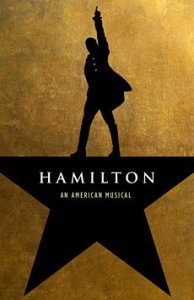|
|
 This past year my daughter and I were in New York City and saw the play that took Broadway by storm – Hamilton. It was spectacular in every way imaginable, but it was also the antithesis of a Broadway musical in every way imaginable. It was different.
This past year my daughter and I were in New York City and saw the play that took Broadway by storm – Hamilton. It was spectacular in every way imaginable, but it was also the antithesis of a Broadway musical in every way imaginable. It was different.
According to Broadway League research, the average theatergoer is a 44+-year-old, Caucasian, female tourist. 78% of these attendees have completed college, and 39% have advanced degrees. The average income of a Broadway attendee is $205,000 so clearly, this is primarily an affluent, white, middle-aged audience.
Which is why the traditional Broadway musical is such a hit. They’re packed with big dance numbers, elaborate sets, over the top musical performances and happy endings.
It’s also why most Broadway hits look a lot like each other. Many of them are based on proven stories like Lion King or use iconic music (Mamma Mia or Beautiful) from a popular entertainer/group. It costs between $5-$10 million dollars to launch a Broadway musical, so the risks are huge. Why would someone ever vary from the successful formula?
I think that’s the same question that we wrestle with all the time. When there’s someone in your category (or everyone in your category) that does something in a certain way, it feels smart and safe to do it the same way. The problem is that it’s pretty tough to stand out when you’re just like everyone else. The only way to compete is to outspend the competitors and for most companies that isn’t an option.
Or you can pull a Hamilton. Take everything I just said about a Broadway musical and turn it on its head.
- The play’s primary spoken style is rap/hip-hop (hardly the language of the middle-aged white woman).
- The storyline is based on the life of Alexander Hamilton, who is famous sort of. He was chief staff aide to General Washington during the Revolutionary War and our country’s first Secretary of the Treasury (hardly sexy roles).
- The main character is not a typical hero – in fact, he was arrogant, and his blunders and ego cost him dearly, both personally and professionally.
- There’s no happy ending to the story – as you know, Hamilton is killed in a duel.
- The set is a simple, almost rustic wooden set with a single turntable to create movement.
Despite all the reasons why Hamilton isn’t like all the others and shouldn’t be successful by Broadway’s standards – it has broken every attendance record you can imagine. Tickets are impossible to get. It has sold out for months at a time not just in New York but all around the country, and the secondary market (StubHub and the like) sold the worst seats in the house for $700+. It received a record-breaking 16 Tony nominations and many people referred to the Tony’s in 2016 as the Hamiltonys because they were expected to sweep the awards show.
My point – people are not the lemmings we assume they are. What Hamilton creator Lin-Manuel Miranda understood is that being different is marketing gold. Being different means you have less competition, and every dollar you spend telling your story is amplified because it’s not competing with as much noise. He also understood that being different means you get plenty of media attention, which creates curiosity, interest, and momentum.
How can you take your product or service and turn expectations and “the norm” on its ear? How can you authentically (that matters a lot) give a unique twist to what you do so you stand out from the crowd?
I encourage you to identify the 3-4 places where everyone in your industry looks the same and figure out how you could deliver something different and fresh. Hamilton isn’t just a spectacular play; it’s a business lesson we should all pay attention to.
